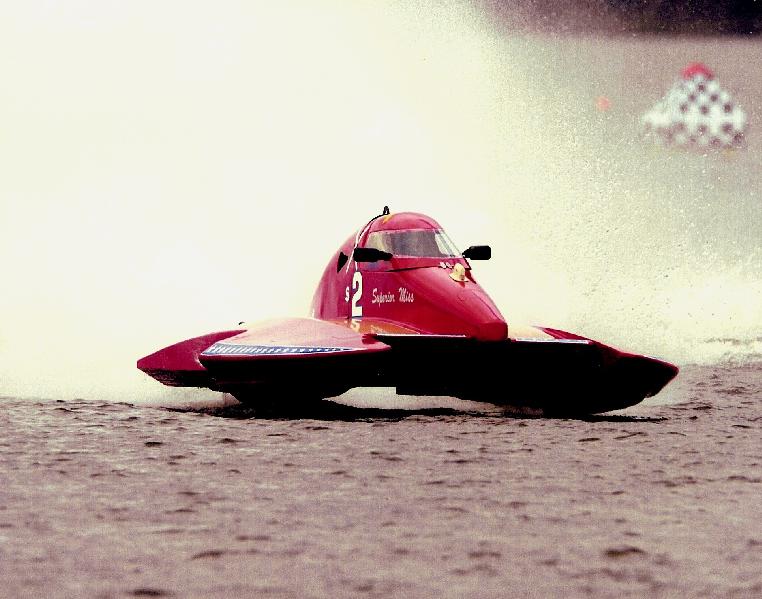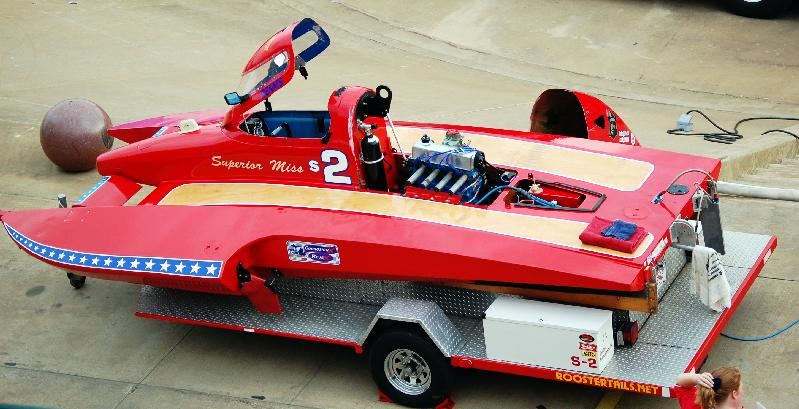Pinto Power at it again! Hydroplane Racing
It’s no wonder there are a ton of 2.3 engines out there making power. They’re one of the top engines for Ministock racing, we knew that, and there’s a few companies making go-fast parts for them like Esslinger (http://esslingerengineering.com/) and Racer Walsh (http://racerwalsh.zoovy.com/). We’ve even got a near fanatical following for the turbo 2.3’s over at turboford.org. But, I had no idea folks like  Dennis Wright were racing these Pinto ‘bangers in hydroplanes! I met Dennis over on the HAMB board. He was responding to my post about this finned aluminum valve cover I designed. I think the market for it would be big enough to manufacture it for profit, but I’m busy working on other things, like MyRideisMe.com!
Dennis Wright were racing these Pinto ‘bangers in hydroplanes! I met Dennis over on the HAMB board. He was responding to my post about this finned aluminum valve cover I designed. I think the market for it would be big enough to manufacture it for profit, but I’m busy working on other things, like MyRideisMe.com!
Dennis wrote the info below in an email and said I could post it with a few pics. This isn’t a car or a bike, but you’ll see by reading, this story fits: My Ride is Me.
 The 2.5L stock class boats have the letter “S” designation with the boat number. Most “S” boats these days use the Ford 2300. The motors are basically the pure stock version of the OMC marine motor. We are allowed to run a Holley 350 or 500 as a replacement for the Rochester. We don’t run a water pump or alt. to free up power and we can run an aftermarket distributor. The cam profile is based on the stock marine version, which has been duplicated by several custom cam grinders. The heads are limited to any Ford 2.3 head with 4 spark plugs and a combustion chamber volume of at least 61cc. Stock followers only, no roller rockers allowed. Pistons must be the Federal Mogul H435P. This keeps the compression down to about 8.5:1.
The 2.5L stock class boats have the letter “S” designation with the boat number. Most “S” boats these days use the Ford 2300. The motors are basically the pure stock version of the OMC marine motor. We are allowed to run a Holley 350 or 500 as a replacement for the Rochester. We don’t run a water pump or alt. to free up power and we can run an aftermarket distributor. The cam profile is based on the stock marine version, which has been duplicated by several custom cam grinders. The heads are limited to any Ford 2.3 head with 4 spark plugs and a combustion chamber volume of at least 61cc. Stock followers only, no roller rockers allowed. Pistons must be the Federal Mogul H435P. This keeps the compression down to about 8.5:1.
The boats are typically about 16 feet long and a little over 8′ wide. The minimum weight is 975 pounds including the driver and top speed is right around 100 mph on a good day. My boat is 10 years old and is on the heavy side. I do good to hit about 90 mph and finish in the middle of the pack. Most are built from composite materials (fiberglass and carbon fiber), but there are still a few wood boats being built. Mine is a hybrid. The center section is made from wood and the out appendages, called sponsons, are made from carbon fiber.
 Our sanctioning body is the American Power Boat Association. I attend races in Ohio and Michigan. But there are races along the east and west coasts as well. This class is one of the most popular classes due to the manageable size of the boats and reasonable cost to operate.
Our sanctioning body is the American Power Boat Association. I attend races in Ohio and Michigan. But there are races along the east and west coasts as well. This class is one of the most popular classes due to the manageable size of the boats and reasonable cost to operate.
Thanks Dennis! I’ve never been a big fan of speed on the water (for some reason, that scares the crap outta me!) but that looks like fun. Going fast on a budget is the foundation of hot rodding. I’ll have to watch for one of these races and check it out.
For more info about the S class of racing, check out this website: http://www.marinepropriders.com/tech/index.html
Then, check out the American Power Boat Assoication’s website. (http://www.apba-racing.com/index.html)While you’re there, take a look at the Superlight Tunnel Boats. (http://www.apba-racing.com/Categories/pi/index.html) Who thought that up?
Finally, credit for the photos goes to Phil Kunz. Click HERE for his website. While you’re there, make sure to check out the Phil Kunz Scrapbook. It’s filled with vintage pics of powerboat racing. Most of the black and white pics show flathead powered boats of all shapes and sizes trying to grab the racer’s edge back then. Too cool!
Please take a look at our sponsors:








Now THAT’S a cool boat! :)